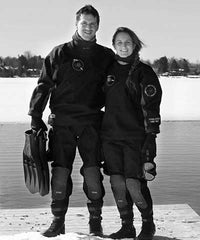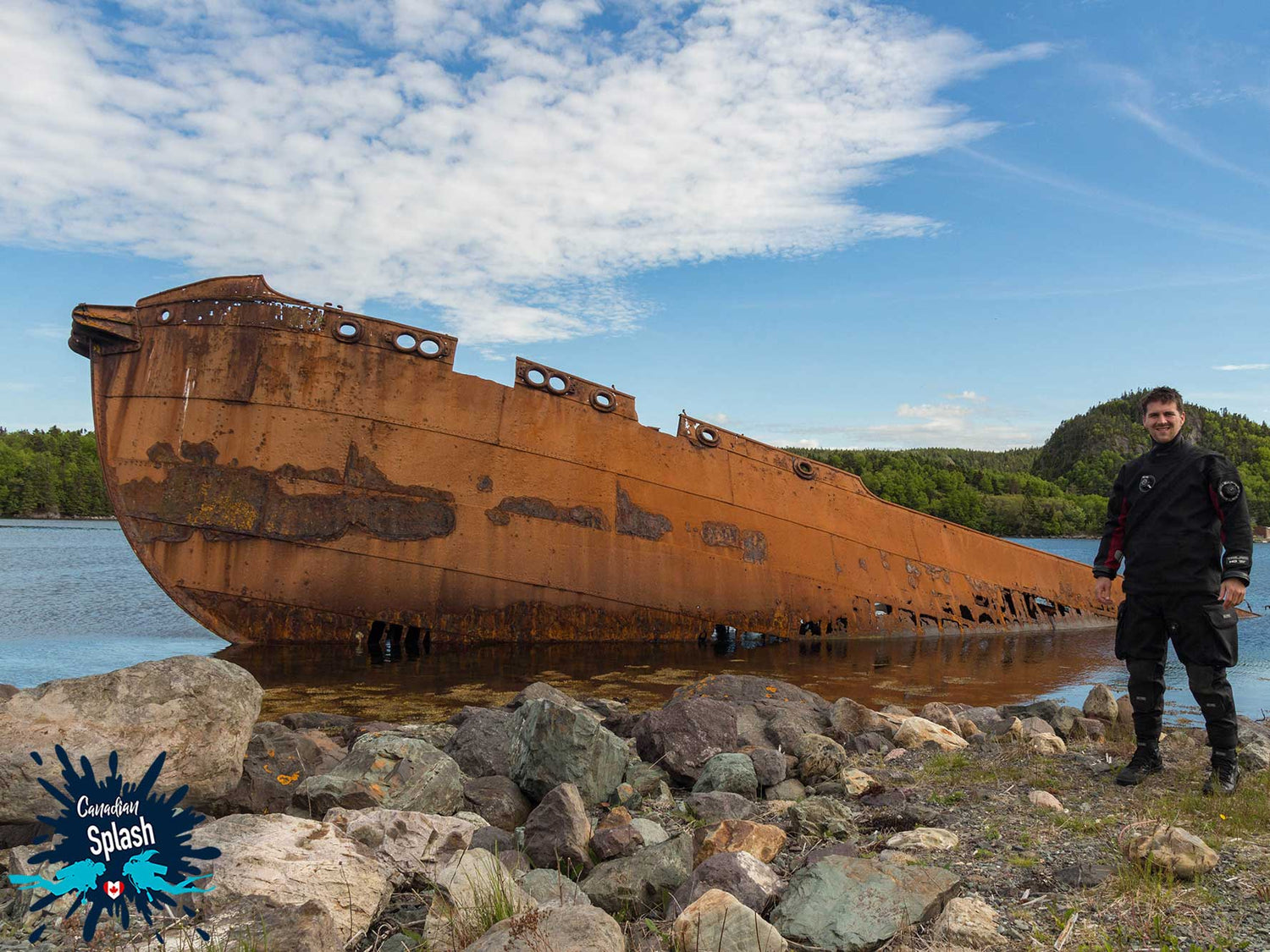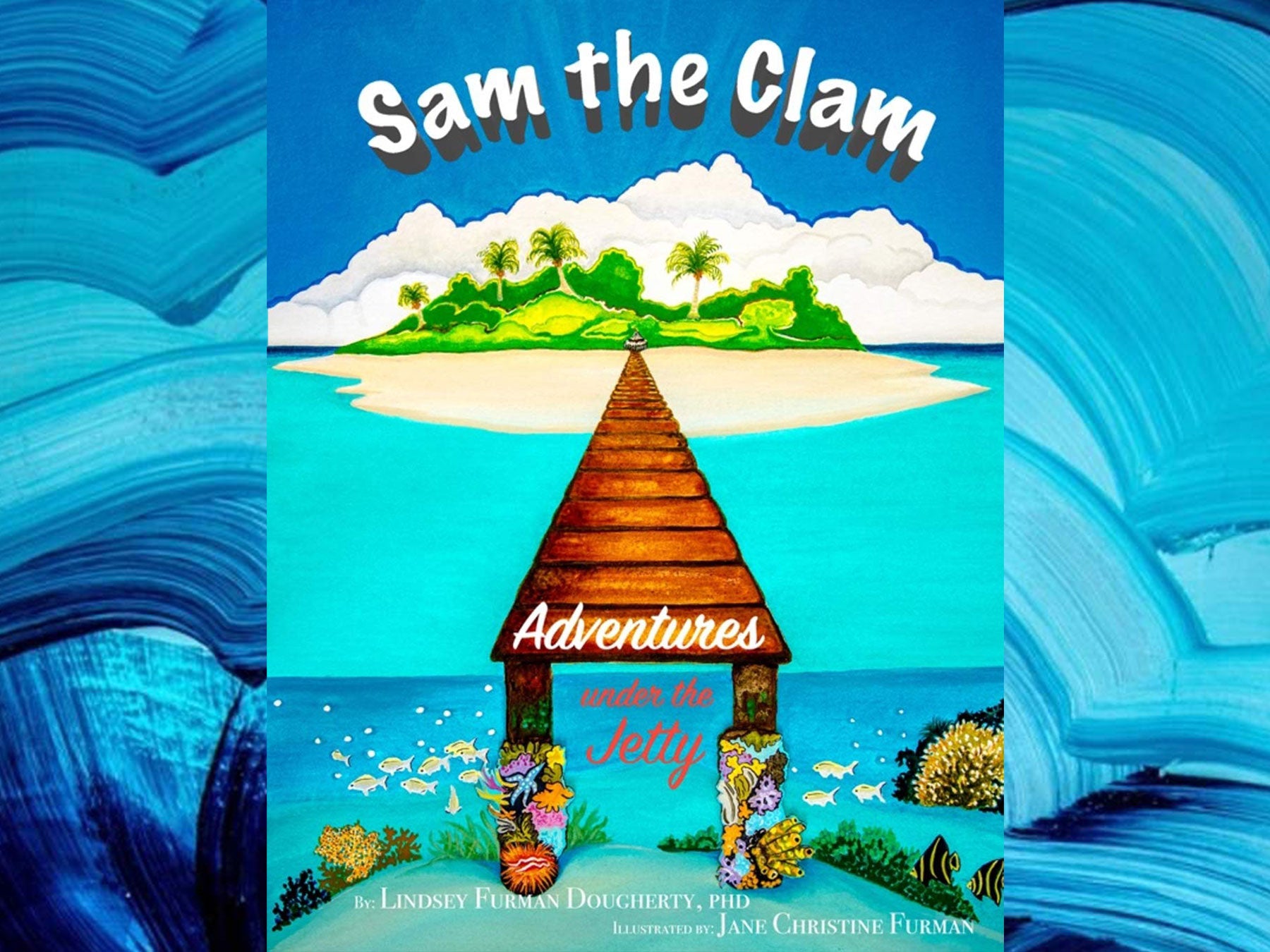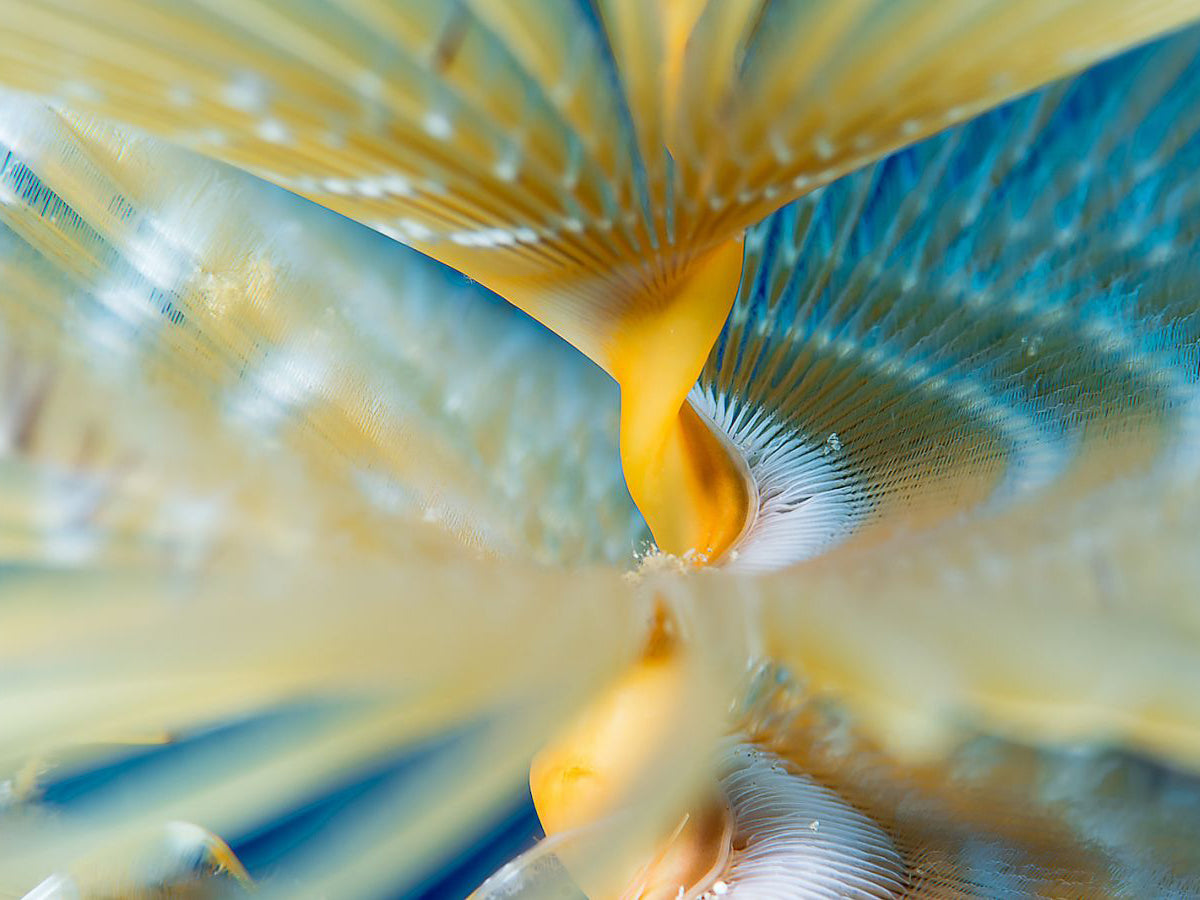When Joey and I first set off to find the SS Charcot shore diving site we really didn't know what to expect. You can probably imagine our excitement and elation when we pulled into the parking to find this half-submerged ship breaching out of the bay's calm water. Photo © 2020 Ali Postma
By Ali Postma
Where the houses are colorful like jellybeans and the diet consists of beer and scallops, Newfoundland is not what comes to mind when most people think of a typical dive destination.
Sitting at the most easterly point of Canada, this maritime island is a place of contrasts - foggy days offset by warm and welcoming pubs, summer icebergs meeting the stark island cliffs. Having traveled there myself, the rugged nature and oceanic vistas are as surreal as they come. At first glance, diving in Newfoundland seems like it should be reserved for the bold and brave, but with Caribbean colored water and a vast coastline stretching for more than 18,000 miles, this place holds a special connection to the sea.
Scuba Diving in Newfoundland
As part of our cross Canada scuba diving endeavor, my husband, Joey and I arrived in the Newfoundland capital of St. John’s direct from Nova Scotia. It was the end, of June and we joined a wreck expedition allowing us to indulge in a week’s worth of wreck and shore diving, in arguably one of the best cold water locations in the world.

Sea stars of all different shapes and sizes were a popular sighting in the chilly waters of Newfoundland. I spied some that were smaller than a dime, while other monsters like this Common sea star (Asterias rubens) had grown to be as large as a dinner plate. Photo © 2020 Ali Postma
Shore Diving Conception Bay
Located on the Avalon peninsula, Conception Bay constitutes the southeast coast of Newfoundland and is adjacent to one of the most populous regions of the island, the St. John’s Metropolitan Area. The bay runs from Cape St. Francis in the south to Split Point in the north, covering an area of 1,295 square kilometers.
Because if it’s rugged rocky profile and relatively sheltered location, Conception Bay has many shore diving locations peppered along its circumference, many of which house a surprising amount of biodiversity for being within a stones throw of the coastline. Bacon Cove, Shipwreck Harbour and Holyrood are a few of Conception Bay’s most notable shore diving sites, and reaching them can take anywhere from 30 minutes to over one hour via car.
Mask on, regulator in, I loved wading out from the easy beach access and ascending below the surface. Each shore diving site presented an aquascape that varied from gently sloping pebbled beaches to rocky shelves. In some of the busier harbour area’s, where a dive buoy is advisable, there were even retaining walls fabricated from large boulders with pockets for marine flora and fauna to hideout.

With a mouth full of scraggly teeth, wolffish is one of those creatures that are so ugly they're cute. Atlantic wolffish (Anarhichas lupus) are restricted to the cold waters of the North Atlantic, where the water can be so cold they possess several natural compounds in their blood to prevent it from freezing. Photo © 2020 Ali Postma
Lumpfish, pout, cunner, wolf eels, cod, flounder and sculpin are common fish sightings that we enjoyed on our shore dives, with an even longer list of invertebrates. We even had a magnificent and fleeting encounter with a ray in the rock weed clogged shallows.
Bell Island
Bell Island is a small 9.7 kilometer-long by 3.5 kilometer-wide island in Conception Bay. Thanks to pristine water clarity and it’s prosperous iron ore mining history, this one-of-a-kind place attracts scuba divers from all over, looking to dive and experience incredibly well-preserved world war II shipwrecks. The PLM, Saganada, Lord Strathcoma and Rose Castle are four massive iron ore carriers torpedoed by German U-boats in 1942 with direct orders from Hitler. The vessels now rest on the ocean floor between 50 and 150 feet of water.
Words cannot describe how cold the water felt as I plopped off the dive boat loaded in gear ready for my first Bell Island dive. Even with a drysuit on, I was cringing at the instant brain-freeze and doing a final gear check.
When descending down the mooring line, the water was so impeccably clear, I had an odd moment of vertigo. It must have been a combination of the extreme cold and amazingly clear water. The many hues of blues all melded together like a watercolour painting. It made it hard to figure out which way was up - or out.

Heading underwater to visit the four iron ore shipwrecks of Bell Island was the historic ride of a lifetime. Here Joey is hanging out at the bow of the PLM, the smallest and shallowest of the four vessels. Photo © 2020 Ali Postma
Once I got my bearings, I began to explore this otherworldly place. The environment was so unique. The visibility ran as far as my eyes could see. Right away ocean critters began to show themselves, some floating up in the water column, others anchored to the metal superstructure of the ship.
In spite of the depth, the sun radiates down from the surface refracting off the water molecules in scattered beams of light. A kaleidoscope of reds, purples, greens, oranges and pinks caught my eye as I swam past anemones, jellyfish, sea stars, encrusting algae, and many other species. And at the heart of it all, the dark silhouette of a once proud vessel.

In Newfoundland, ctenophores and jellyfish (like the Neoturris pileata seen here) littered the water. As we enjoyed our scuba diving, their pulsing transparent bodies glittered like sparkling confetti amid the vast blue. Photo © 2020 Ali Postma
For five days straight, Joey and I enjoyed exploring Bell island’s cold water wonderland. We did multiple dives on the shipwrecks, allowing us to thoroughly check out the bow, stern and many nooks and crannies in between. Of the four ships, our favourites were the Rose Castle and the Lord Strathcona.
The Rose Castle is the deepest wreck and a true time capsule. On top of the basket stars and soft coral found on parts of her structure, many of the Rose Castle’s riggin and artifacts are located in the exact place they fell when she sank to the bottom. Like the Rose, the Lord Strathcona was in picture perfect condition as well. The main reason this ship was a favorite was because of the bright red male lumpfish encounter we had on one of our last dives.

Joey enjoying an up-close encounter with a male Lumpfish (Cyclopterus lumpus) on the Lord Strathcona shipwreck. During the breeding season, males turn this reddish-orange colour. Photo © 2020 Ali Postma
Dildo’s Whale Bones
Although the whaling profession has long died off, approximately 1 hour from St. John’s on Trinity Bay, lies the small and seemingly irrelevant town of Dildo, a former whaling station. From the late 19th century until 1972 around 20,000 whales were hunted in Newfoundland and Labrador for oil, meat and fertilizer. Now the Dildo whaling stations has turned into a run down industrial entourage, giving divers the opportunity to find skeletal remains from fin, minke and sperm whales scattered across the bottom of the ocean.
Preparing to explore Dildo’s blubbery past Joey and I accessed the dive site from the beach adjacent to the wharf. Descending down the sandy shore line we kitted up and plunged into the water. As a dive site, this location was easy to navigate reaching depths of 20 meters (66 feet). Following the wharf and staying in the sunny shallows we took in our first impressions of the dive site.
Overall this section of Trinity Bay was darker and murkier than our previous dives in Conception Bay. The site had an abundance of cheeky cunners that seemed to frolic everywhere. There were also crabs, snails and sculpin hiding in the brown muddy benthos.

Joey discovering the remains of a whale rib bone in the mucky bottom of an old whaling station in Dildo. Photo © 2020 Ali Postma
While not the most visually astounding dive, we had decided to scuba dive Dildo for the experience of hunting out the remains of giants. Finding our first whale bone was an eerie experience. I was surprised at how intact and white the bone was after several decades underwater. The bones were also excessively porus - likely from microscopic bugs and worms. It reminded me almost of a sponge.
During the dive I had the chance to find whale ribs, jawbones and vertebrates, all of which over the course of time, have become home to other marine life.
From coastal vistas, playful humpback whales and everything in between, Newfoundland is a province chock-full of ocean life. As a pair of scuba divers who have spent many years diving in Atlantic Canada, visiting Newfoundland has been on our bucket list for the intrigue factor alone. Never would I have imagined our short lived visit would allow me to witness such a seemingly perfect slice of nature, ripe for diving.

A pair of red-gilled nudibranchs (Coryphella verrucosa) bunch together to shelter themselves against the choppy swell. Photo © 2020 Ali Postma
Writers Note: This Canadian scuba diving location was featured in DAN’s Alert Diver Magazine article "Newfoundland: Where History and Diving Collide" as a part of the February 2020 Q1 publication.
 Brought together by their love for being in the water, Ali and Joey have been proudly sporting a neoprene wetsuit for the better part of a decade. Following their passion, Ali and Joey now live a life less ordinary – working, traveling and of course scuba diving. Through writing and photographing their dive adventures, they hope to help people fall in love with the underwater world, all while instilling knowledge and respect for the animals that live there. In their recent project - Canadian Splash - Ali and Joey will be traveling and diving all over Canada showcasing the beauty, wonder, and fragility hidden beneath the water in their home country.
Brought together by their love for being in the water, Ali and Joey have been proudly sporting a neoprene wetsuit for the better part of a decade. Following their passion, Ali and Joey now live a life less ordinary – working, traveling and of course scuba diving. Through writing and photographing their dive adventures, they hope to help people fall in love with the underwater world, all while instilling knowledge and respect for the animals that live there. In their recent project - Canadian Splash - Ali and Joey will be traveling and diving all over Canada showcasing the beauty, wonder, and fragility hidden beneath the water in their home country.
Join Ali and Joey on Instagram, Facebook, Pinterest, and Twitter to dive Canada!
All images copyright © 2019 Ali and Joey Postma.
These images were taken using a Canon EOS Rebel SL1 camera in 200DLM/C TTL Underwater Housing with dual DS161 strobes.
Additional Reading
Canadian Splash: Destination Nova Scotia
Canadian Splash: Destination New Brunswick
An Insider's Guide to Diving the Blue Heron Bridge, Florida
How To Get the Best Shots When Shooting Wrecks
My Top 5 Favorite Wrecks of Truk Lagoon
The Birth of SUDS | Servicemembers Undertaking Disabled Sports













